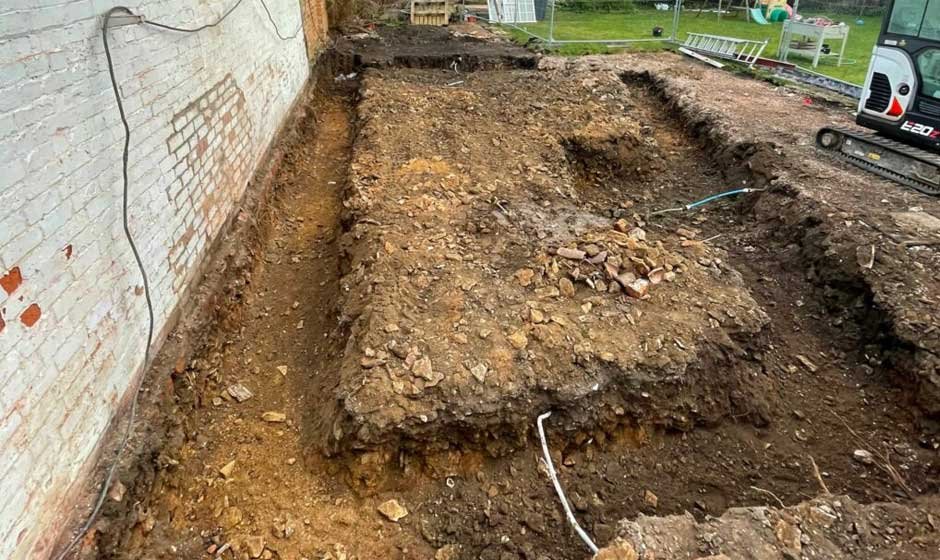One of the least appreciated factors working on your house is the soil. Although it might seem strong and unchangeable, the earth under your feet is always moving and adjusting to fit its surroundings. Although this natural movement—soil movement—occurs gradually over time, its consequences on your house can be notable. Any homeowner must first understand how soil moves and what it entails for the foundation of their house. From wall fractures to significant structural problems, this article will dissect the five main ways soil movement could affect your home.
What Causes Soil to Move?
Soil movement can be triggered by numerous natural and man-made factors, most commonly temperature fluctuations, precipitation, erosion, and seismic activity. For instance, clay-rich soils readily expand when wet and shrink when dry, creating a continuous cycle of ground movement. During periods of heavy rain or drought, the soil volume beneath your house can vary significantly. This repeated expansion and contraction over time may compromise your home’s structural integrity. Furthermore, inadequate drainage or landscaping that directs water toward the foundation can accelerate this process, leading to more noticeable and damaging results.
The Role of Soil Movement in Foundation Issues
The most serious consequence of soil movement is its impact on your home’s foundation. Shifting ground can cause the foundation to crack or settle unevenly. When one part of the foundation moves more than another, it creates stress fractures and structural instability. Homeowners might notice sloping floors, doors that no longer close correctly, or visible cracks in walls and ceilings—all signs that soil movement is affecting the foundation. In such circumstances, foundation repair becomes a necessary step to prevent further damage. Addressing the problem early helps homeowners ensure their home’s safety and avoid more expensive repairs down the line.
Cracks in Walls and Floors
Soil movement influences not only the foundation but also the appearance of the house by causing obvious damage everywhere. Cracks in walls, ceilings, or floors are among the first indications of changing ground. Though initially little and appearing benign, these cracks can develop with time and point to more serious structural problems. This is especially prevalent in homes without enough soil compaction during construction or in places with expansive clay soils. Even if some cracks might be cosmetic, their size and pattern should be investigated. For brickwork, horizontal or stair-step cracks usually indicate foundation movement rather than surface-level settling.
Plumbing and Drainage Problems
Shifting earth also puts stress on underground plumbing systems. When the ground moves, pipes can become misaligned, damaged, or even broken, leading to leaks and water damage. These issues can be particularly troublesome if they occur under a home’s slab foundation, where leaks might go undetected for extended periods. Sometimes, the soil itself can even be the cause of drainage problems. If the earth swells and directs water towards the house instead of away from it, the extra moisture can aggravate existing foundation issues and intensify further soil movement. Ensuring proper grading and investing in excellent drainage systems can significantly lessen this danger.
Landscaping and Exterior Damage
Soil movement doesn’t just impact your home’s interior. Outdoor elements like patios, driveways, and retaining walls can also shift, crack, or even collapse when the ground beneath them moves. Even large bushes and trees in your landscaping can worsen the problem. Their roots can draw moisture from the ground, causing the soil around your house to shrink and settle unevenly. Conversely, overwatering plant beds near the foundation can lead to soil swelling due to oversaturation. Maintaining a balanced landscape with properly controlled irrigation helps preserve more stable soil conditions.
Conclusion
Although soil movement is a normal occurrence, failing to account for it can seriously harm your house. The consequences are broad and typically expensive, ranging from damaged walls to plumbing problems and foundation instability. Knowing the causes of soil movement and identifying early warning signs makes all the difference. Whether your property needs expert foundation repair, structural monitoring, or improved drainage, proactive measures can help shield it from long-term damage. Remember, the ground under your house may be out of sight, but it should never be out of mind.
















